Details Matter
- Published:
- Length: 1378 words
- Reading Time: 7 minutes
Details sell the believability of a scene. The clutter, debris, stuff, and things that fill an area or adorn an outfit tell a viewer lots of information about a person, place, or thing without any words required. Our lives are filled with embellishments and paraphernalia that add interest to the stories of our lives, and it can be weird if those details are missing in a work of art. But coming up with those details is hard, at least for me. It's probably the biggest challenge I have as an imaginative realism quilt artist.
I recently took a vacation to New York City and visited the Museum of Modern Art (MOMA) which featured an exhibit titled Crafting Pinocchio . This exhibit was dedicated to the behind-the-scenes creation of Guillermo Del Toro's Pinocchio . This exhibit was an exemplary demonstration of how the artists and animators designed the film, the effort that went into crafting the sets and characters, and ultimately why details were so critical in telling the story.
Thematic Colors
One of the early displays in the exhibit were four photos of the same still life, and each photo had an entirely different color palette. Each color palette represented a different setting in the film.
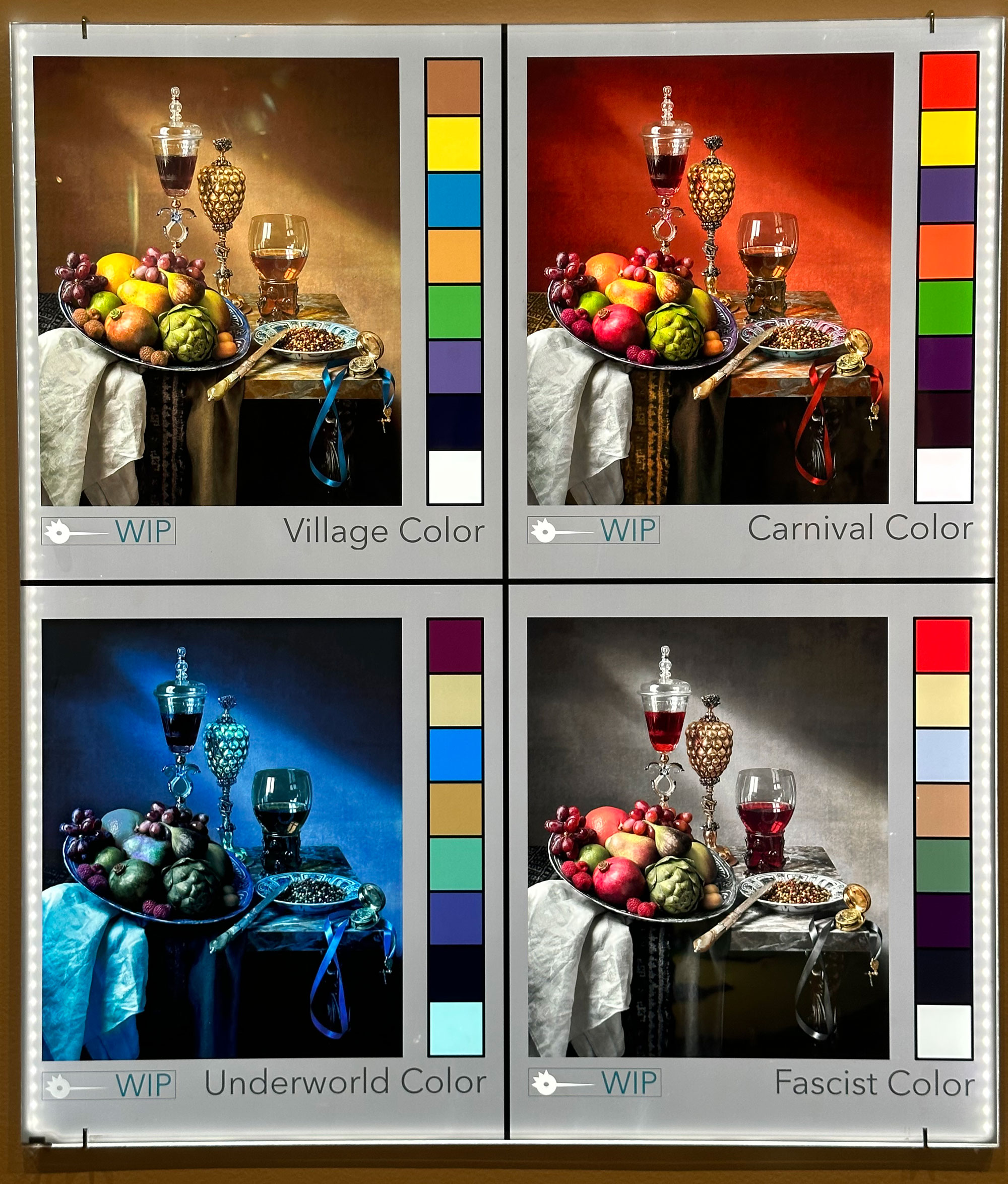
The Details: Colors represent emotion, and the Pinocchio art department used them masterfully throughout the film. From the warm happiness in the Village palette to the action and excitement in the Carnival palette, the unsettling creepiness in the Underworld palette, and the cold, stark mausoleum of the Fascist palette, these collections of color tell audiences exactly what to feel without even looking at the characters and sets.
The Characters
Pinocchio was filmed using a method of animation called stop-motion. This method of filmmaking requires physical models of characters, scenery, and sets to be built. There were hundreds of characters and dozens of sets created for Pinocchio, but the main character of the movie is, of course, Pinocchio himself. Here is one of his models, made from 3D printed resin, steel, silicone, fabric, and paint.

The Details: In the story, Pinocchio is a hand-crafted puppet, so the artists added intentional imperfections (details) to convey that part of his background to the audience. Pinocchio's knees are different heights, one hand is more finished while the other is distinctly tree-like, and a branch springs from his head. Rough woodgrain is clearly visible throughout his form.
Another character is the dogfish.
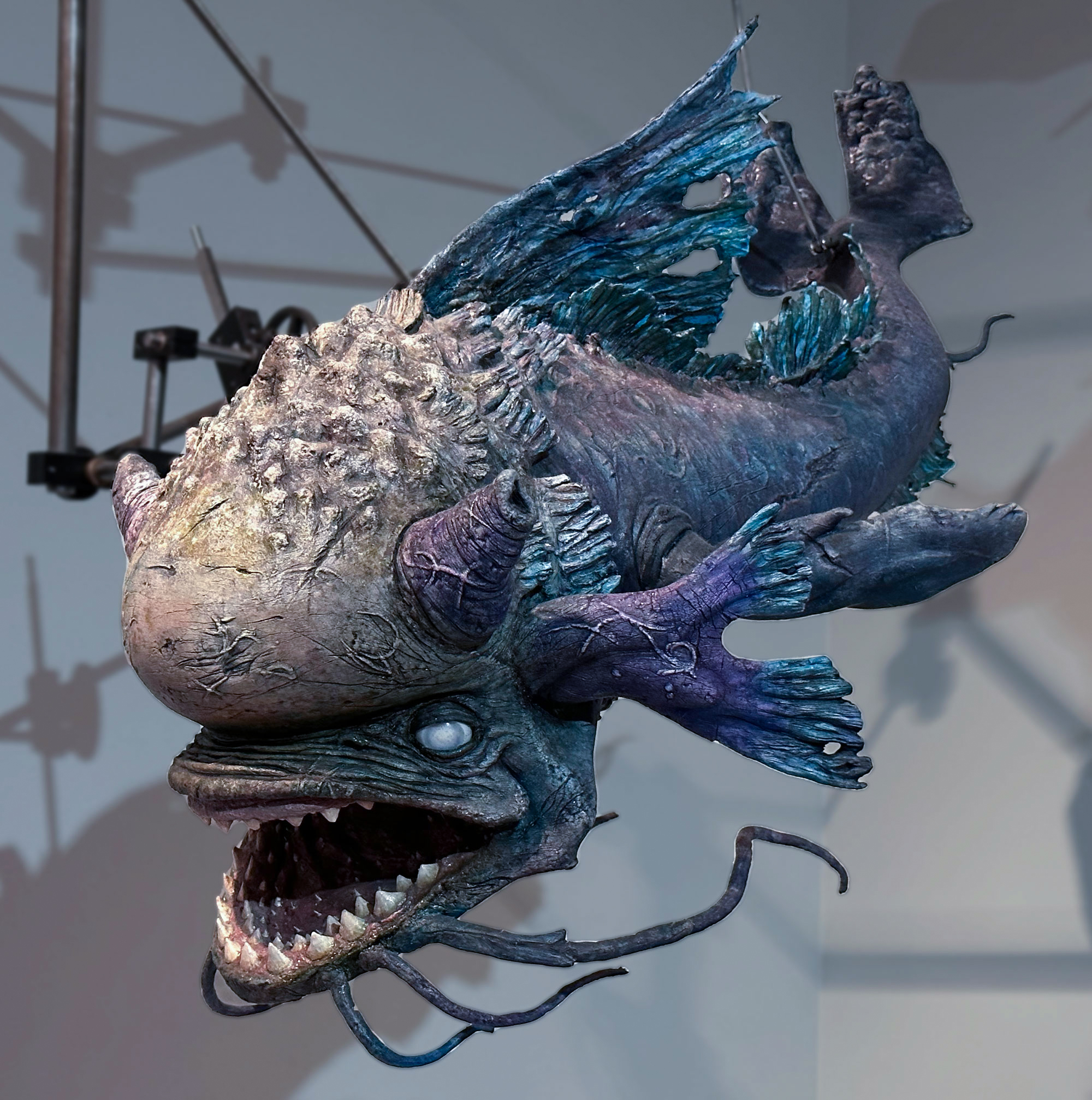
The Details: The art team wanted this fantastical, sea-dwelling beastie to look grounded in nature. During the first-look development phase, team members took silicone and resin castings of everyday foods — tomatoes, kale, broccoli, and others — to see their texture, color and veining (shown below). These castings provided inspiration for the dogfish's skin, texture, and scarring.
![]()
The last characters I'll showcase are the sisters Death (below, left) and the Wood Sprite (below, right).
![]()
The Details: These two inseperable sisters reflect the notion that there is no life without death — a significant theme throughout the film — and they guide Pinocchio to the afterlife. To bring these two characters to life, animators and puppet makers developed the intricacies of the models by testing movement, building test models, and exploring various textures. Here are three test samples of Death's wings built in paper.
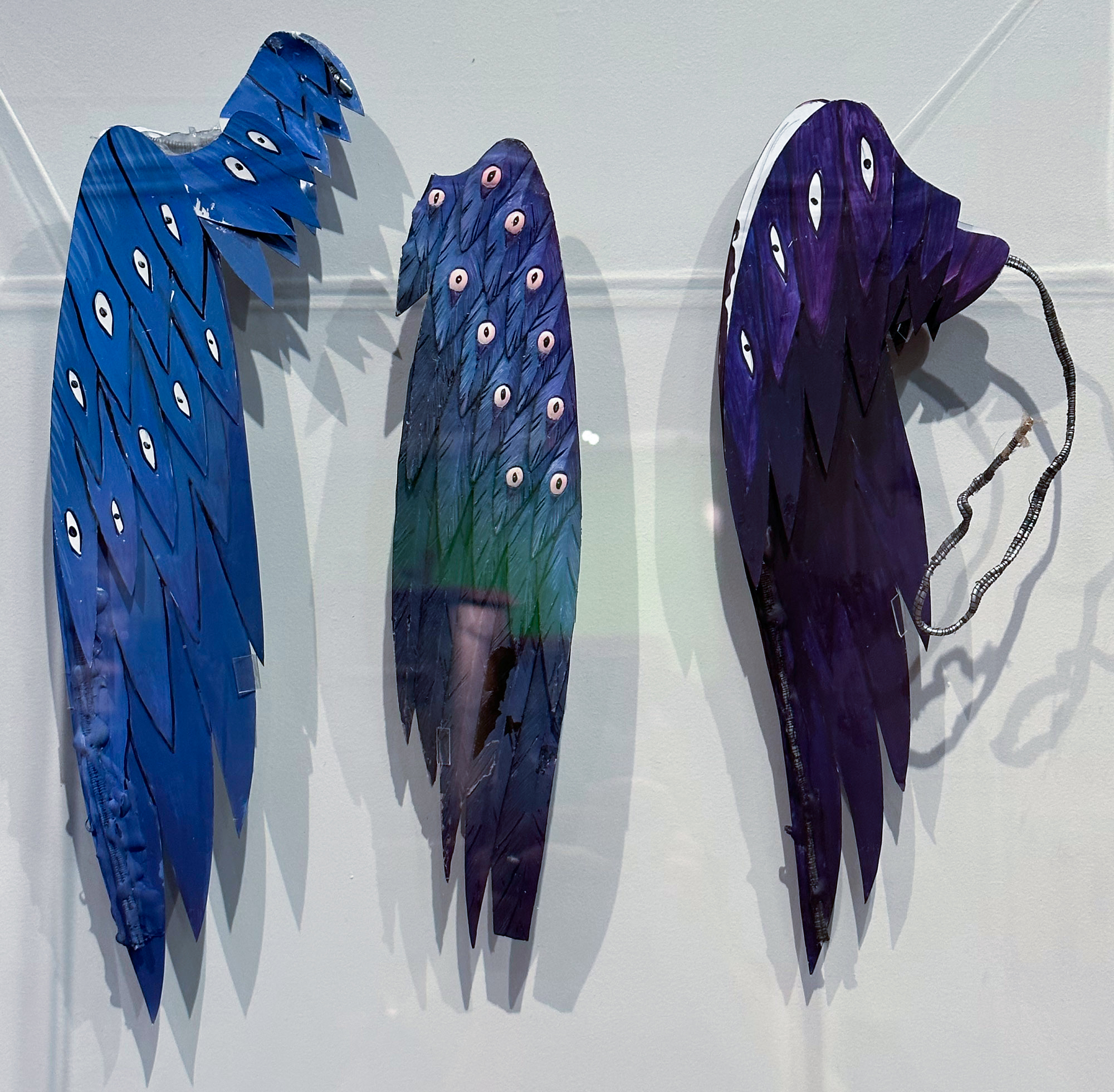
Here are a number of texture studies, made from paper, Spectralite paint, hot glue, feathers, faux fur, spray paint, textured paper, spider webs, and gloss medium.

The Sets
Details in a set tell the viewer where the characters are. A room can be anything. It's the things that go in the room, from the paint to the furniture and everything in between, that tell us whether the room is a modern living room or a prison cell in a castle dungeon.
Pinocchio is set in the not-too-distant past, in Fascist Italy shortly before World War II. The sets had to convey that historical time period, in addition to communicating their purpose to the audience.
In this scene, Pinocchio lays lifeless on a doctor's exam table. How do we know this is a doctor's office from the 1940s?
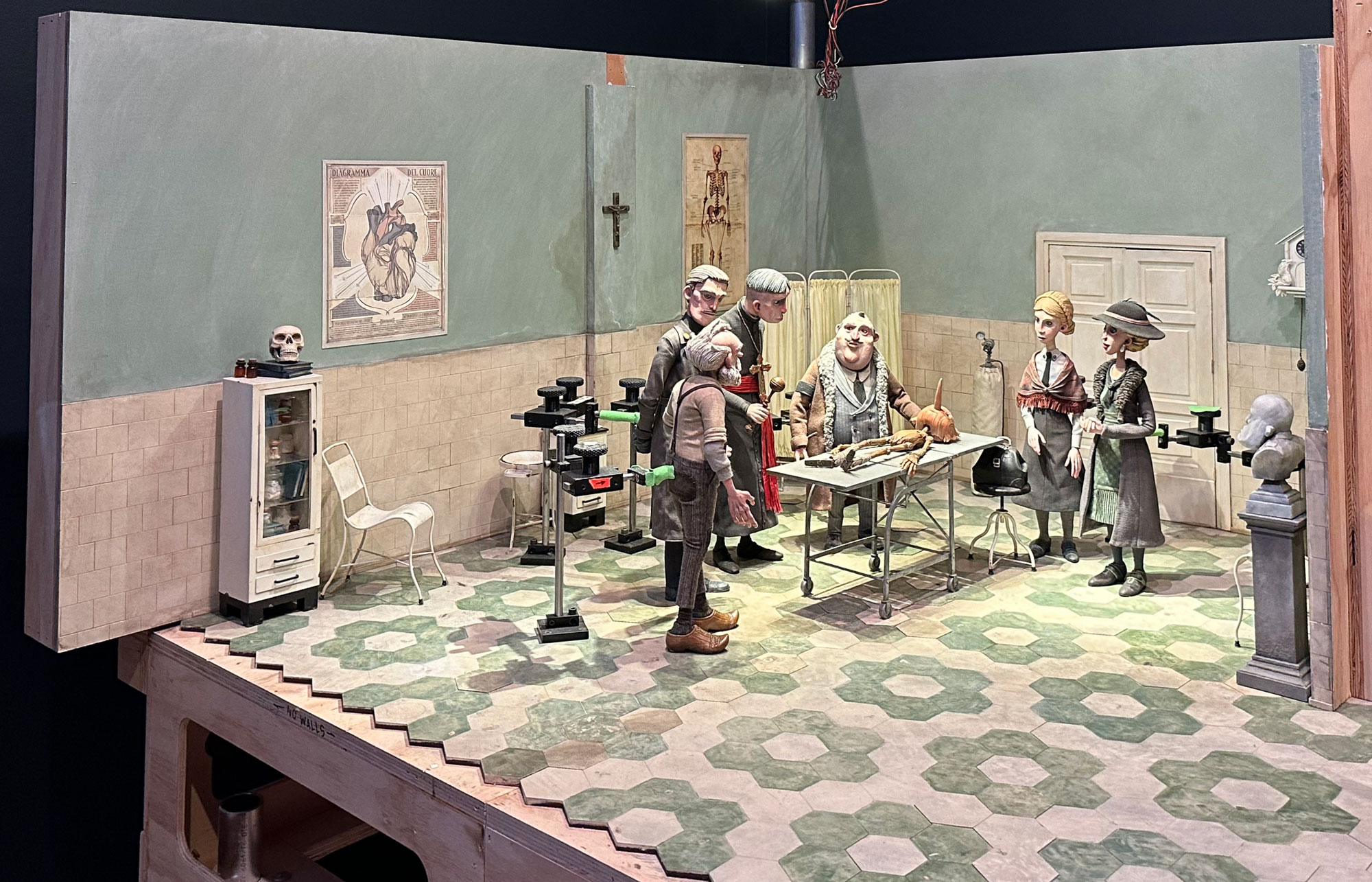
The Details: Medical illustrations of a heart and skeleton are hanging on the wall. The wall and floor are both tile, reminiscent of a hospital. A privacy screen is in the far corner and a doctor's bag rests on a stool by the exam table. A canister of some compressed gas — presumably oxygen — is to the left of the door. Last but not least, let's take a closer look at the cabinet on the far left:

There are multiple shelves holding books, stoppered tonics, and jars of tongue depressors, swabs, cotton balls, and rolls of gauze. Even a human skull sits on top. This entire cabinet was about 5 inches tall. There is a ton of detail in this one object, but it is unquestionably something we would expect to see in a 1940s doctor's office or hospital setting.
Back at the beginning of the film, we see the workshop where Pinocchio was carved and brought to life. Geppetto is the craftsman who carved Pinocchio, and this room is in his house. This building is older than Geppetto. It's the home he's lived and worked in his entire life, and that sort of history leaves its mark. How did the artists convey that history to the audience?
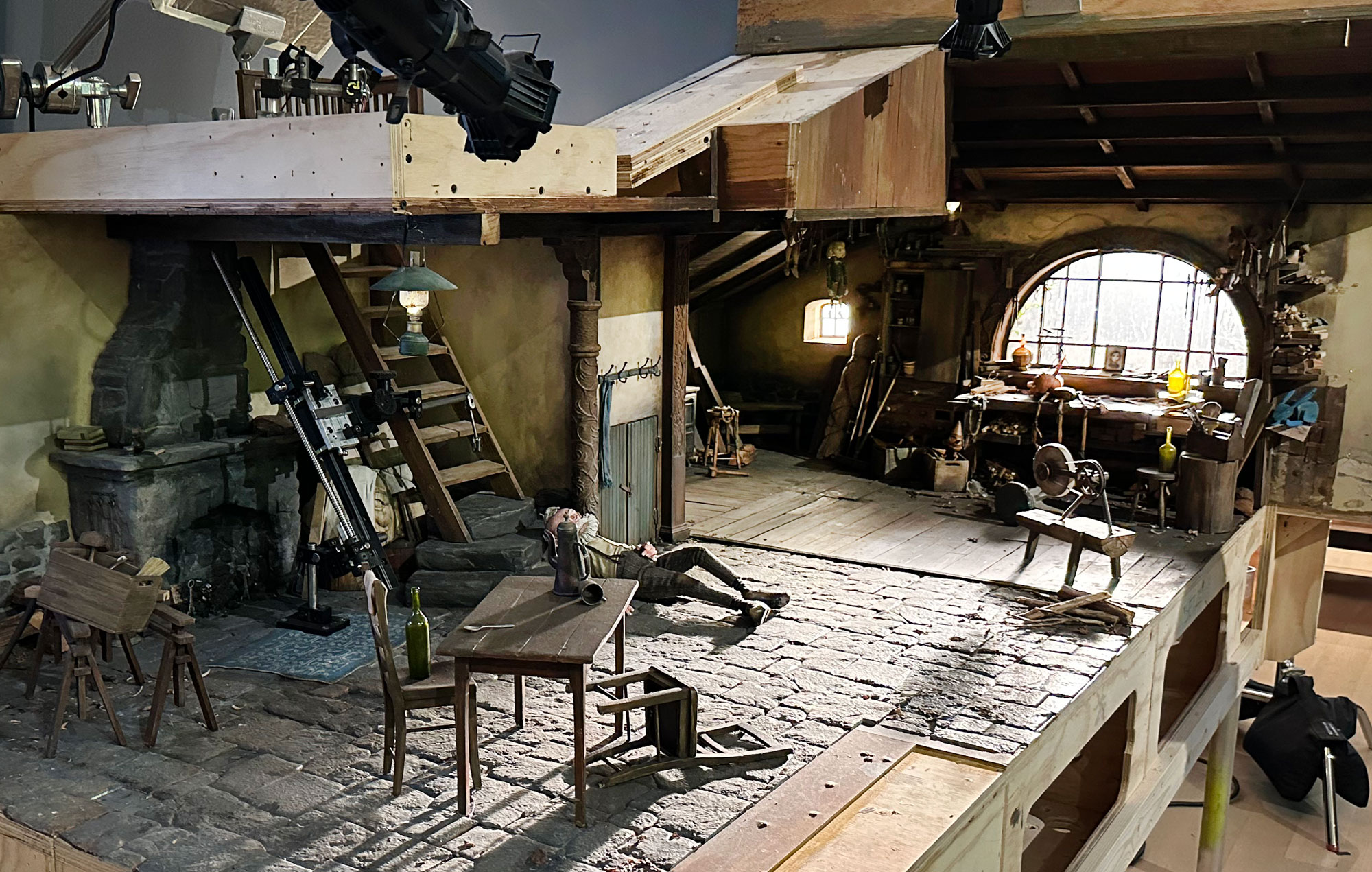
The Details: In the story, Geppetto gets drunk after finishing Pinocchio and falls asleep. We can see a table with a wine bottle, spoon, tipped mug, and overturned chair. There's a rug in front of a cold stone hearth on the left, along with rough-hewn stairs leading to a second story. A shawl is hung on hooks over the door, puppets hang from the rafters, and scraps of wood litter the floor in front of a workbench. Let's take a closer look:
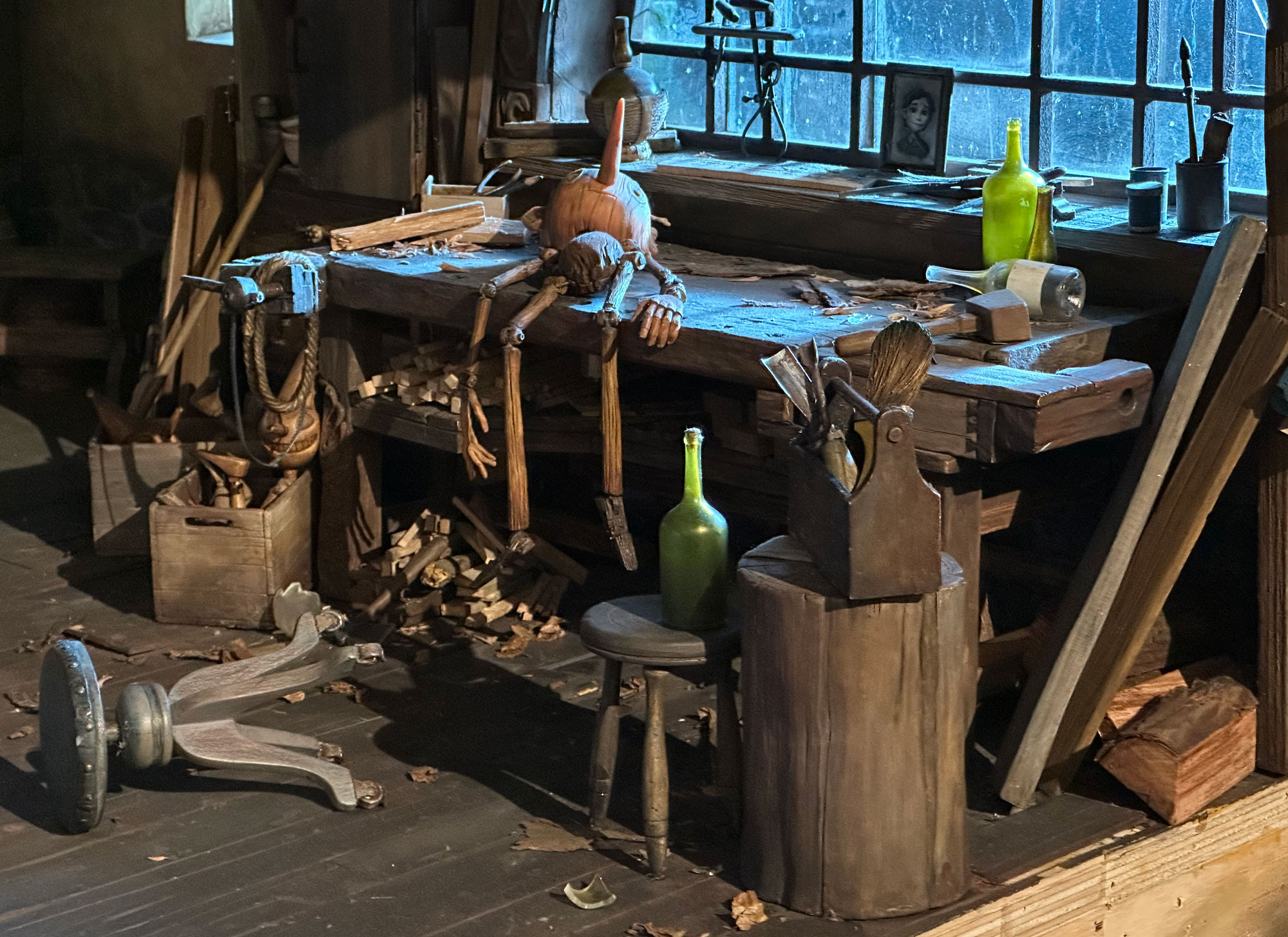
There are piles of scrap wood, more bottles and jugs, and tools we'd expect to see in a woodworker's woodshop: a vice, hammers, clamps, and carving tools in a toolbox. The place is messy. Wood shavings and pieces of glass cover the table and floor around the work area. Even the window is dirty; Geppetto is too busy creating to bother with cleaning the glass, something to which I'd wager every artist can relate. All of these details create a setting that is at once recognizable and relatable to everyone watching the film.
Back to Quilting
Details are important for every representational artist to include in their work, and quilting is no exception. I am an imaginative realism quilter, and details are especially hard for me because my characters and places only exist in my head. I recognize this challenge and it's something I work to improve on with every new design.
The biggest takeaway for me after viewing the Pinocchio exhibit was how much time went into the design. Hundreds of hours by dozens of people went into researching textures, figuring out color palettes, and populating the sets with stuff. Those people did such a good job behind-the-scenes that the film went on to win Best Animated Feature at the 2023 Oscars. All of that development time was worth it to create a stunning final film.
What does this mean for quilt artists? I think it's worth putting in extra time up front on a design before getting to the point where it's to late to change things (which for me is when I start cutting fabric). Figure out the details that will enhance the story you want to tell right at the beginning of your design process. Plan them into the composition. And when it feels solid and right, then move on to creating the quilt.
